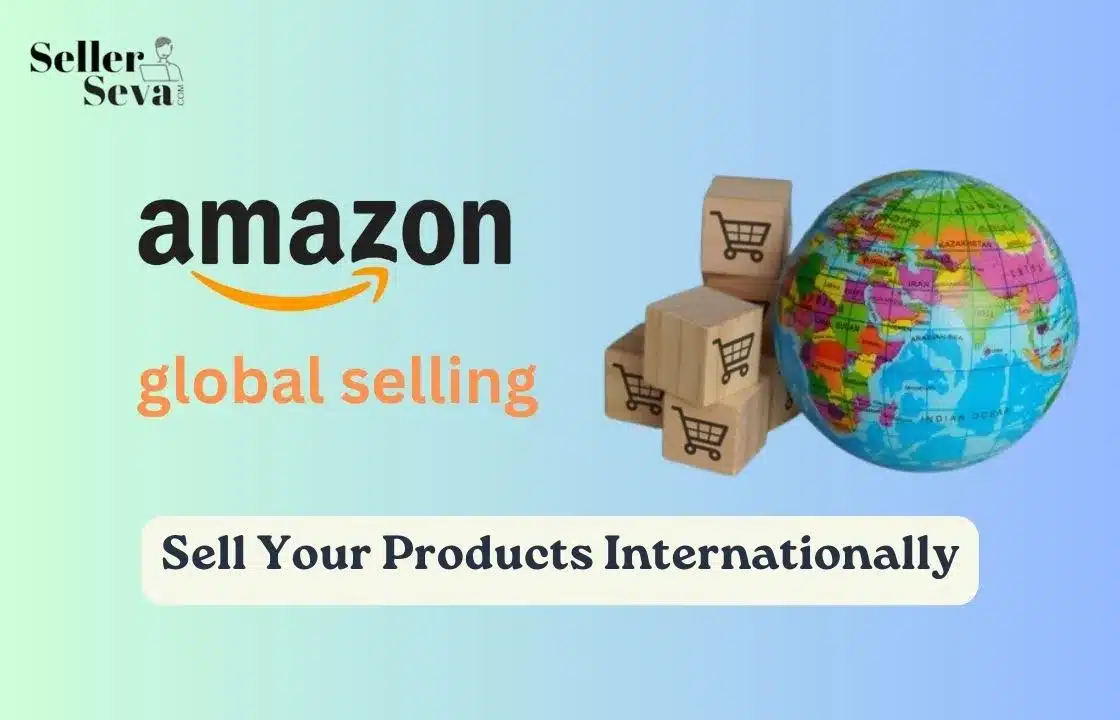
Table of Contents
Introduction
If you are planning to expand your business and sell your products through Amazon, if so, you’ve come to the right place. Although the process of delivering your eCommerce business beyond your home country may sound overwhelming, Amazon Global Selling (AGS) and Fulfillment by Amazon (FBA) make it quite easy.
AGS (Amazon Global Selling) allows a seller to list and sell products in the 13 Amazon international marketplaces. Some of these are in Europe including Germany and the UK, Asia including India and Japan, and North America including Mexico and the U.S.A. Usually, it is necessary to have one or several seller accounts for one country, however, Amazon has developed Unified Accounts, which allow covering several countries from Europe and North America at once and make it easier to expand across the world.
What Are the Benefits of Amazon Global Selling?
Global selling is always beneficial. Here are some major benefits:
- Wider Customer Base: When you start selling its products in other countries, it can access a wider customer base. Higher visibility usually results in more sales and hence, better revenues for the companies.
- FBA Advantage: International selling is made easy by Amazon’s FBA service. FBA covers aspects like storage, packaging, shipping, and even customer service. It encourages you to expand to new markets quickly and directly without having to deal with logistics on your own.
- Reduced Branding Costs: Because you are already located in your home market, going global incurs less costs. This means that you can use your established reputation to create brand awareness in other markets.
- Increased Sales During Festivals: Selling in different countries helps you to establish yourself in such opportunities as Christmas, Cyber Monday, Black Friday, and many other opportunities to increase sales during specific months of the year.
- Multi-Currency Earnings: Amazon also handles the unusual conversion of currencies and guarantees you to make payments on time to your bank account, making it convenient for international transactions.
How to Sell on Amazon Internationally?
To sell on Amazon internationally entails the following stages. Use the “4Ps” marketing strategy to guide you:
Product
- Research Bestsellers: Find out your best selling products in the home market. Utilize this data to point out products that may do well across the world.
- Assess Demand: Decide whether these products would be popular in the market niches you wish to target. Think about local customer trends, expectations, and requirements.
- Understand Differences: Identify how the differences in the market can impact the effectiveness of your product. Make sure that the products you offer are tailored to the population’s preferences and needs in the country.
Price
- Shipping Costs: Consider expenditures related to shipping products to buyers in other countries and accepting returns.
- Fulfilment Costs: Include the costs of shipping inventory to international fulfilment centres through Fulfillment by Amazon (FBA).
- Customer Support: Include other expenses that arise when supporting customers in their native language.
- Currency Conversion: Think about conversion costs when moving money from international sales to your home currency.
- Taxes & Duties: When choosing your price, consider any taxes and duties that may be present in the target marketplace.
Placement
- Amazon Services: Promote your products through Amazon advertising platforms like Product Ads to bring more traffic to your product pages. You can post your product catalogue and pay cost per click (CPC) to reach the targeted consumers.
- Multi-Channel Fulfillment: Amazon’s Multi-Channel Fulfillment will help manage sales from other platforms. This service enables you to meet orders from different sales platforms through FBA.
Promotion
- Advertising Tools: Amazon provides promotional tools that assist you to market and run promotions. Such tools may differ from one marketplace and can be discounts, special offers, and free delivery services.
What Are the Costs of Amazon Global Selling?
Selling products in different countries comes with some expenses such as monthly charges for selling master accounts. Here’s a quick guide to the fees for various marketplaces:
- United States: USD 39.99
- Canada: CAD 29.99
- Mexico: 600 MXN
- Brazil: 19 R$
- United Kingdom: 25 GBP
- Germany: 39 EUR
- France: 39 EUR
- Italy: 39 EUR
- Spain: 39 EUR
- Japan: 4,900 JPY
- Australia: 49.95 AUD
What Is the Amazon FBA International Shipping Rate?
Transportation costs for exports depend on the country of delivery and mode of transportation to be used. Here’s a quick overview of shipping rates:
Canada:
- Standard Shipping: $1.99 to $4.99 per item or per shipment.
- Expedited Shipping: $4.49 to $6.99 per item or per shipment.
- Priority Courier Shipping: $3.49 to $19.99 per item or per shipment.
Latin America:
- Standard Shipping: $1.99 to $2.99 per item or per shipment.
- Expedited Shipping: $3.99 to $7.99 per item or per shipment.
- Priority Courier Shipping: $2.99 to $29.99 per item or per shipment.
How Do You Manage Global Sales on Amazon?
Managing your international sales on Amazon is simple:
- Decide & Register: Decide on the market you wish to sell in and sign up for membership as a vendor.
- List Items: Include your products in the Amazon international marketplace and learn how to write appealing titles.
- Receive Orders: When customers are making their purchases, you will be notified where to send your products.
- Deliver Products: Send your products to the buyer or use Amazon FBA to fulfil the orders.
- Fund Transfer: Lastly, Amazon takes its commission and deposits the rest of the balance to your bank account.
Conclusion
Amazon Global Selling as a strategy for going international for your business has its benefits. Amazon has multiple marketplaces, and FBA services help expand your clientele base and sales globally. Despite these costs, the possible advantages make international expansion a worthy exercise for many sellers. First, identify your niche markets, set the cost and utilize the platforms to expand your international sales. Precisely, the right strategy can drive the business to even greater heights and success in the international market.
Frequently Asked Questions (FAQs)
01. Can I use my existing Amazon seller account for international sales?
If you have a single account in North America or Europe, you can sell in various countries in the region through the same account. Otherwise, you would need to open new accounts based on the specific marketplace that you will use.
02. How do I handle taxes and duties when selling internationally?
Taxes and duties are also different in each country. If you’re selling goods to European marketplaces, you may need to deal with VAT. In Japan, you must conform to local laws and regulations and remit local taxes and duties where it is necessary. Fortunately, Amazon offers resources to assist in dealing with these requirements.
03. Should I translate my product descriptions for the international market?
Yes, product listings should be translated into the native language of the marketplace you are selling in. This makes it easier for the customers to understand their products and will therefore enhance sales.
04. How can I manage customer support in different languages?
The FBA means that Amazon manages the customer service on your behalf. Even if you are self-fulfilling orders, you must offer customer support in the language of the marketplace that you are in.
05. Can I send products directly to customers from the warehouse?
Yes, you can fulfil orders personally (FBM) and offer worldwide shipping but it will mean that you would have to handle the logistics and pay more for shipping. FBA can be helpful to manage this process in case of international orders.
